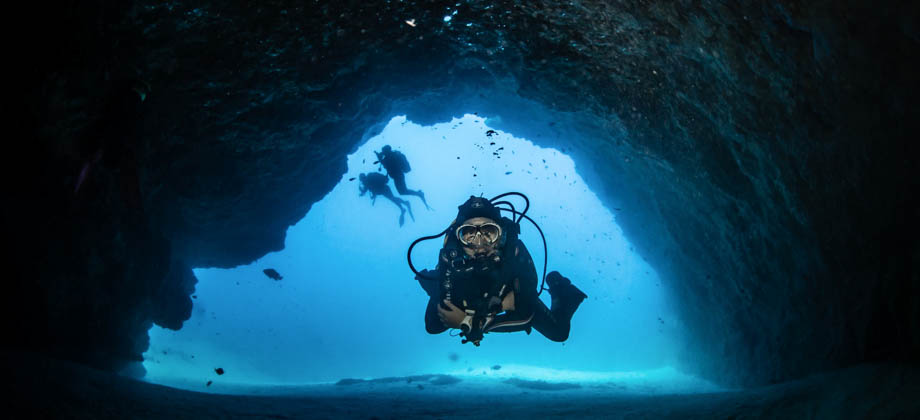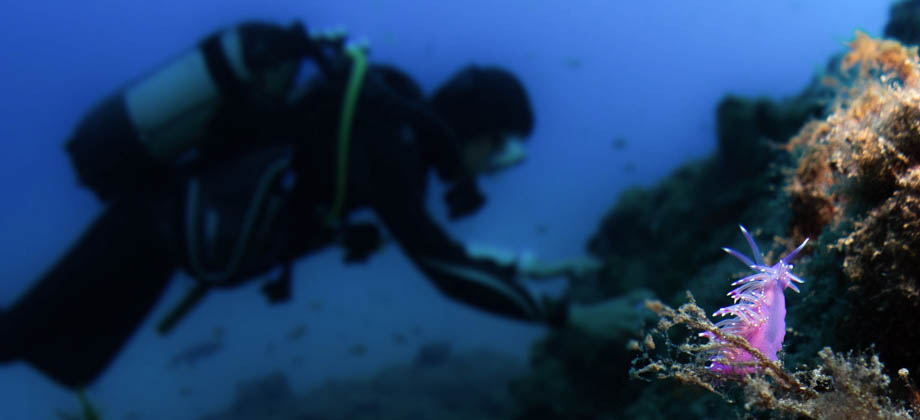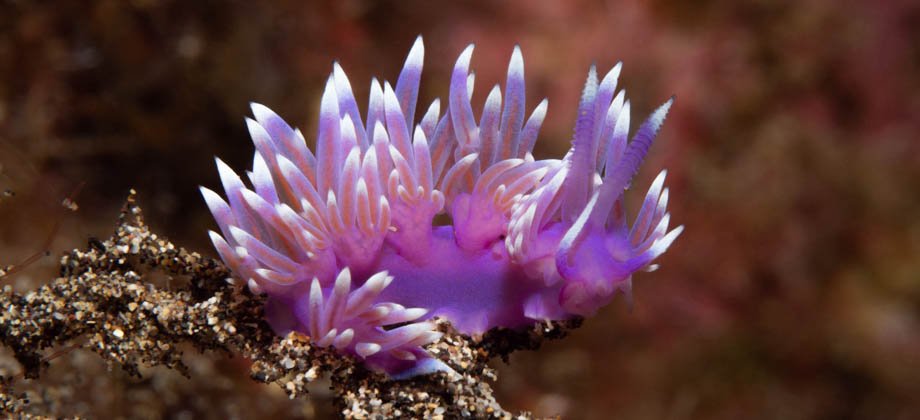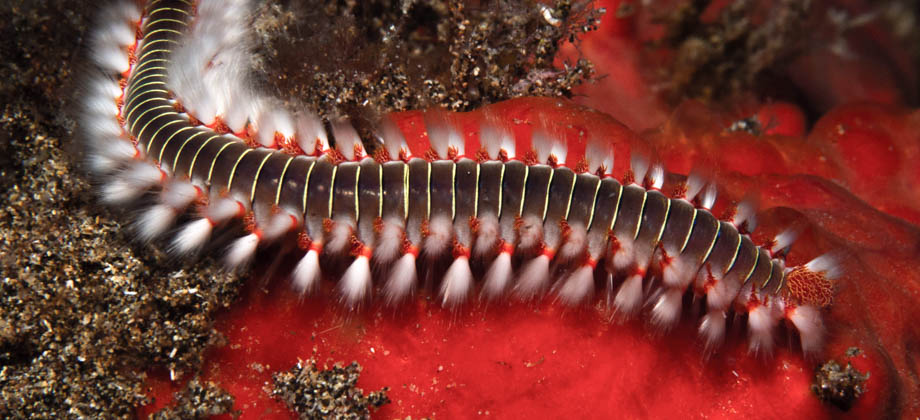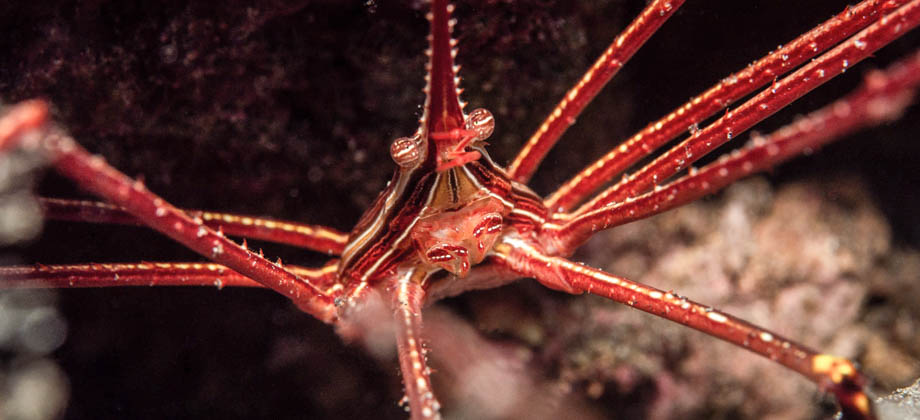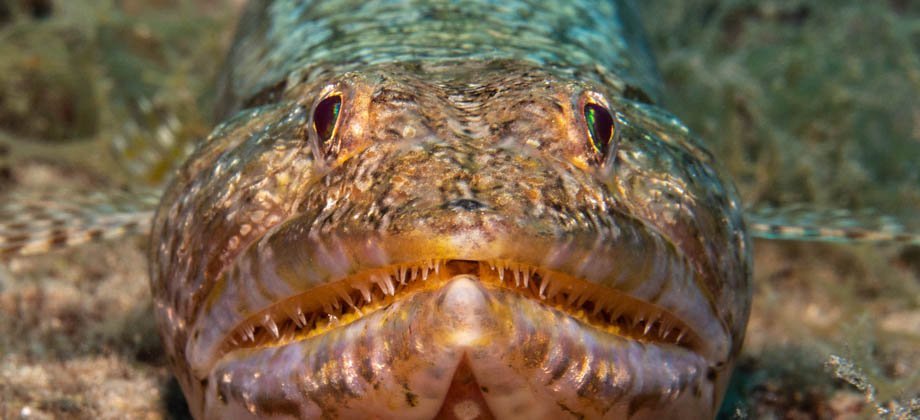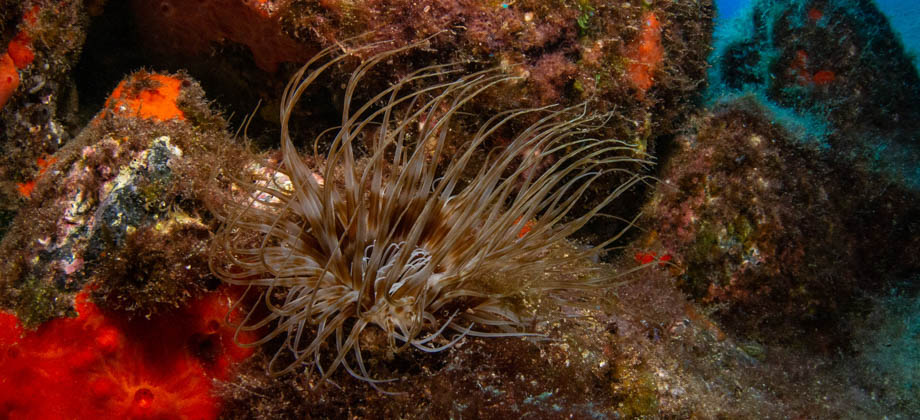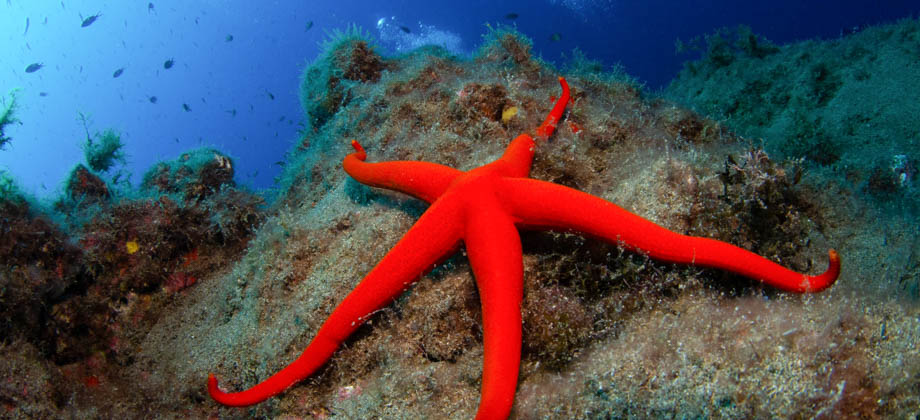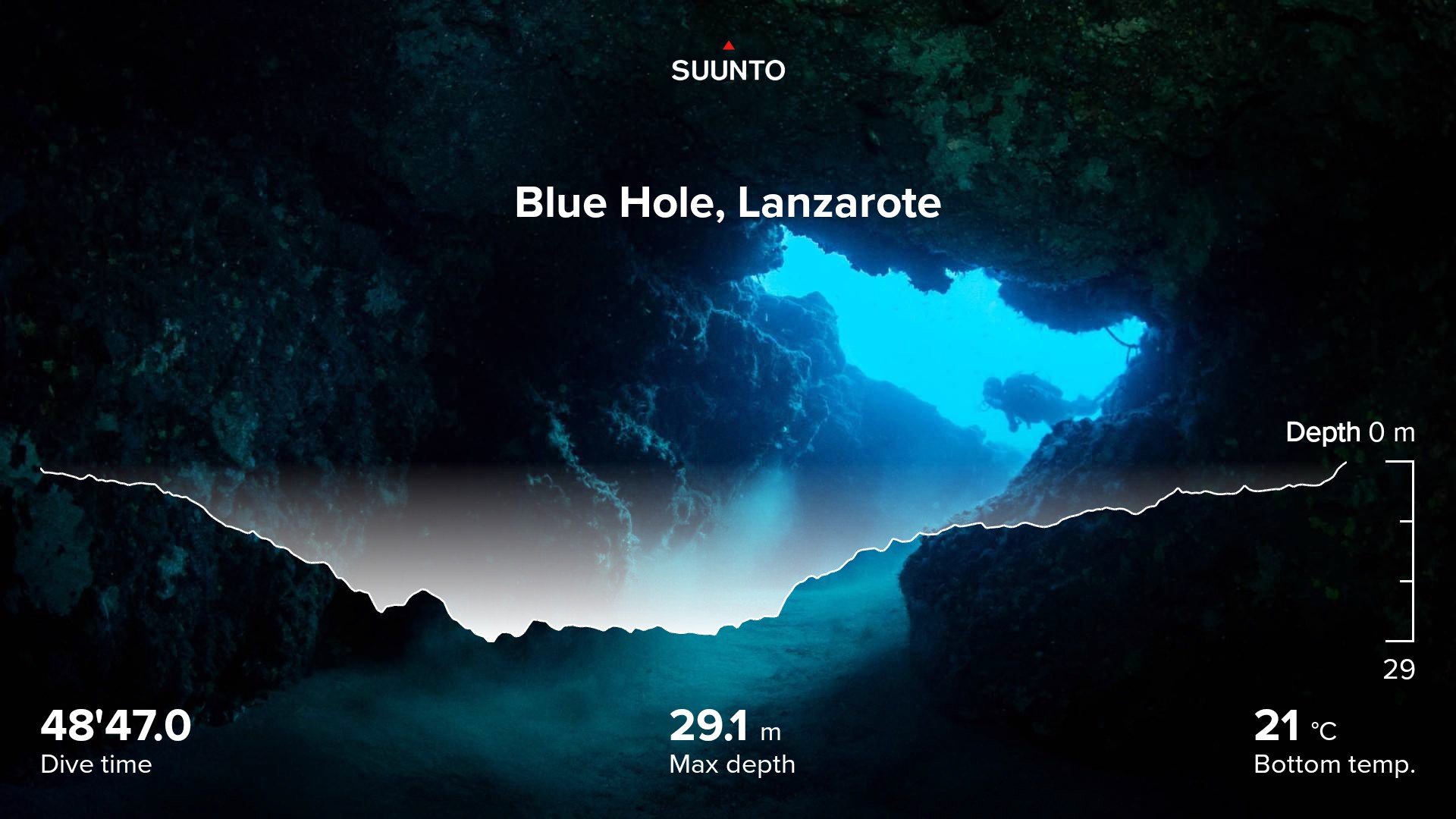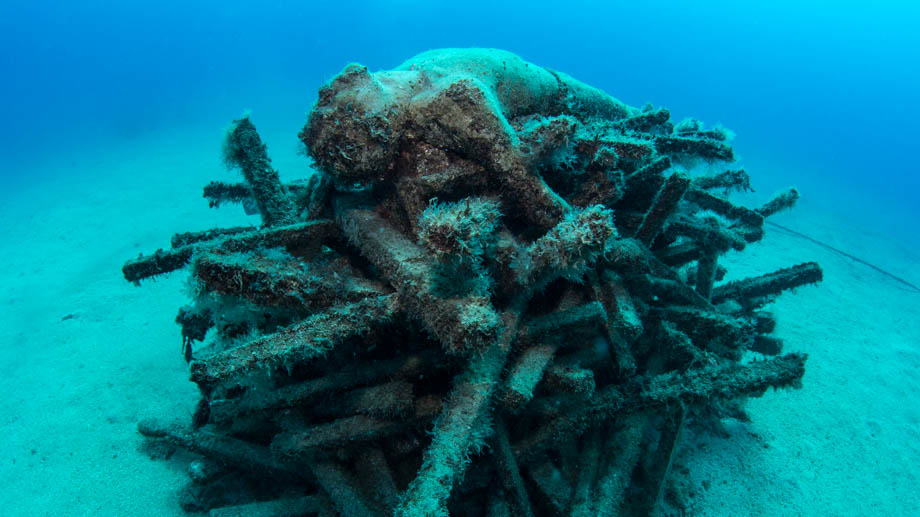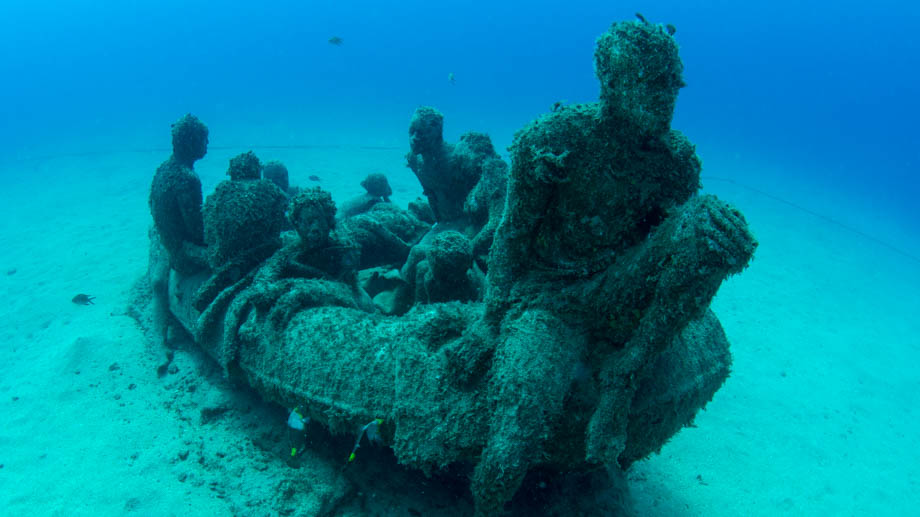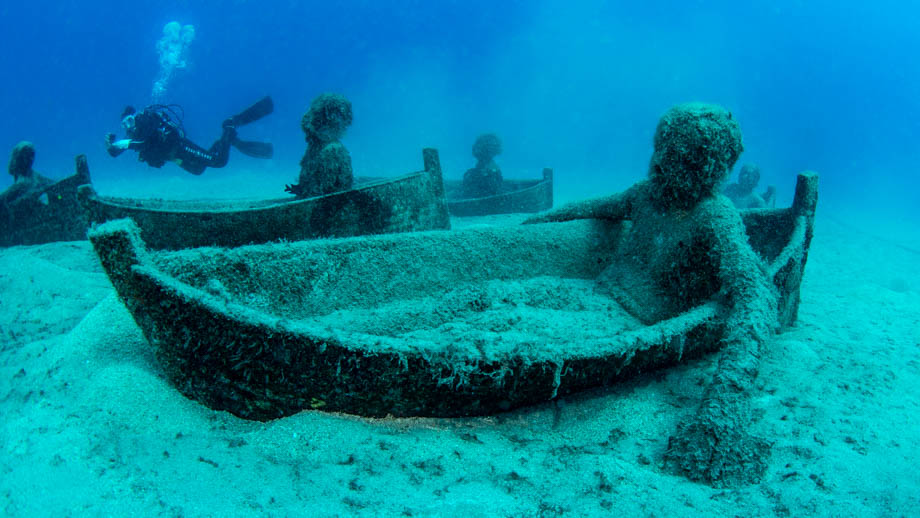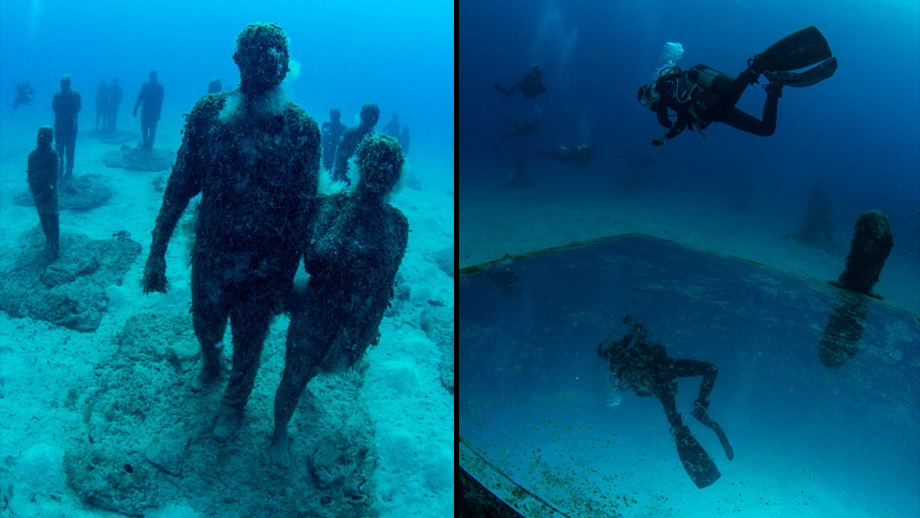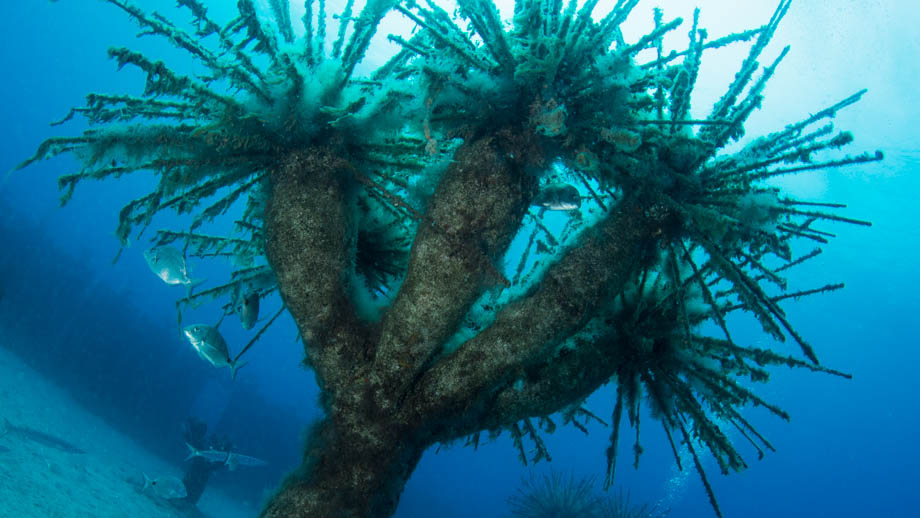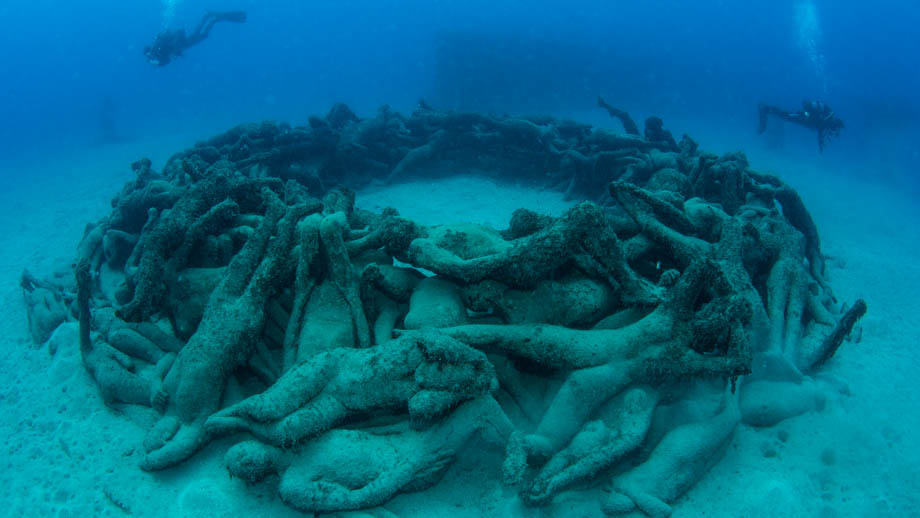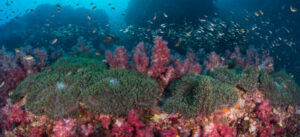Diving Lanzarote
Lanzarote 1 : Volcanoes of Timanfaya
Lanzarote 2 : Diving Puerto del Carmen
Lanzarote 3 : Hiking Caldera Blanca
Diving Lanzarote
 Volcanic oceanic islands emerge from the bottom of the ocean floor and grow until they break the surface of the water. Most often than not, only a small part of the volcanic structure is above sea level, and the vast majority of it remains submerged. This means that there are countless geological structures that are open to exploration to scuba divers--that is as long as they remain within recreational scuba depth limits. The UNESCO Global Geopark of Lanzarote has steep underwater cliffs that are located close to the coast that drop steeply to depths as deep as 200 metres before meeting the shelves that join the different islands within the Canary Islands archipelago. These depths and their proximity to the coast make Lanzarote an ideal location for freediving events.
Lanzarote has a total of 19 designated underwater geosites (sites of geological interest). One of them, the littoral shelf (Geosite LZ48) just off Puerto del Carmen
Volcanic oceanic islands emerge from the bottom of the ocean floor and grow until they break the surface of the water. Most often than not, only a small part of the volcanic structure is above sea level, and the vast majority of it remains submerged. This means that there are countless geological structures that are open to exploration to scuba divers--that is as long as they remain within recreational scuba depth limits. The UNESCO Global Geopark of Lanzarote has steep underwater cliffs that are located close to the coast that drop steeply to depths as deep as 200 metres before meeting the shelves that join the different islands within the Canary Islands archipelago. These depths and their proximity to the coast make Lanzarote an ideal location for freediving events.
Lanzarote has a total of 19 designated underwater geosites (sites of geological interest). One of them, the littoral shelf (Geosite LZ48) just off Puerto del Carmen Nearest Hyperbaric Chamber
Hospital Insular de Lanzarote Juan de Quesada, 35500 Arrecife, Lanzarote Telephone: (+34) 928 81 05 00 / (+34) 928 81 00 00Puerto del Carmen
The Puerto del Carmen geosite was formed by submerged lava flows that were sculpted by coastal erosion when the sea level was lower. The forms that were shaped range from columns and monoliths, to tubes and caves. One such cave is referred to as 'La Catedral' (The Cathedral), but this site is probably more known for its large denizen than its large cave structure. As divers swim up to the cave, a curious dusky grouper (Epinephelus marginatus) called Felix will sometimes approach and accompany them inside, almost as if he is showing them around his grand abode. We know that large dusky groupers are all male, as they, like many other fish species, are protogynous hermaphrodites and are always born female. As they grow older and larger, they develop into males. Dusky groupers are solitary fish that prey on molluscs and crustaceans, which makes La Catedral a perfect home for Felix as there are plenty of crustaceans hidden in nooks and crannies within the vertical walls of the cave.

Museo Atlántico
Much further away, at the southern tip of Lanzarote, lies a collection of forms that were shaped by completely different means. The site is Europe's first underwater museum, 'Museo Atlántico' (English : Atlantico Museum), and is located in a sheltered area in Bahía de Las Coloradas which requires a boat (usually from Marina Rubicon
Sculpture Descriptions
Immortal - "Molded from a local fisherman from La Graciosa island, on the north coast of Lanzarote, the sculpture is made up of a series of concrete sticks and it is representing a traditional funeral pyre."
The Raft of Lampedusa - "Reflecting on the human crisis based on Gericáult’s painting. It represents how sailors were abandoned in the shipwreck off the coast of Senegal. The sculpture aims to show the parallelism between that controversial situation and the current refugee crisis, where many people are being abandoned by society, due to a lack of humanity."
Los Jolateros - "A group of children on brass boats, called “jolateros”, making reference to a local tradition and also a metaphor of a possible future for our children, and how precarious it would be to sail on a brass boat."
Crossing The Rubicón - "Consists of a group of 35 figures walking towards an underwater wall and entrance, a boundary between two realities and a portal to the Atlantic Ocean. The wall is intended to be a monument to absurdity, a dysfunctional barrier in the middle of a vast fluid, three-dimensional space, which can be bypassed in any direction."
The Portal - "Depicts a hybrid animal/human sculpture looking into a large square mirror, which reflects the moving surface of the ocean. Forming part of the underwater botanical garden the concept is intended to portray water within water, an interface or looking glass into another world, the blue world."
Hybrid Garden - "A merge of nature and humanity living in harmony, and at the same time making a reference to the rich vegetation of Lanzarote. These sculptures are half human, half cactus, and are an important part of the botanic garden."
The Human Gyre - "Over 200 life-size figurative works creating a vast circular formation or gyre. Consisting of various models of all ages and from all walks of life, the positioning of the figures constructs a complex reef formation for marine species to inhabit and is a poignant statement for visitors to take with them at the end of the tour."

